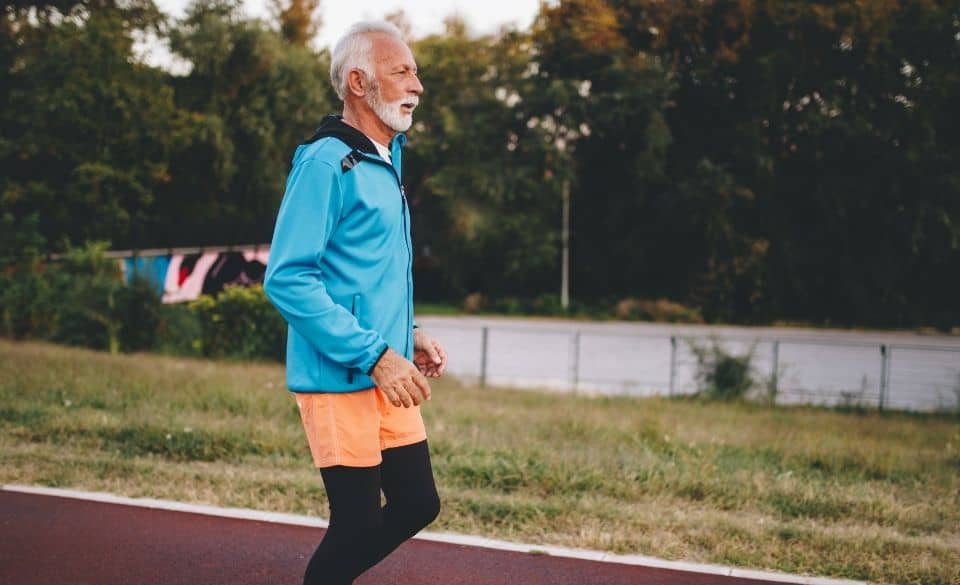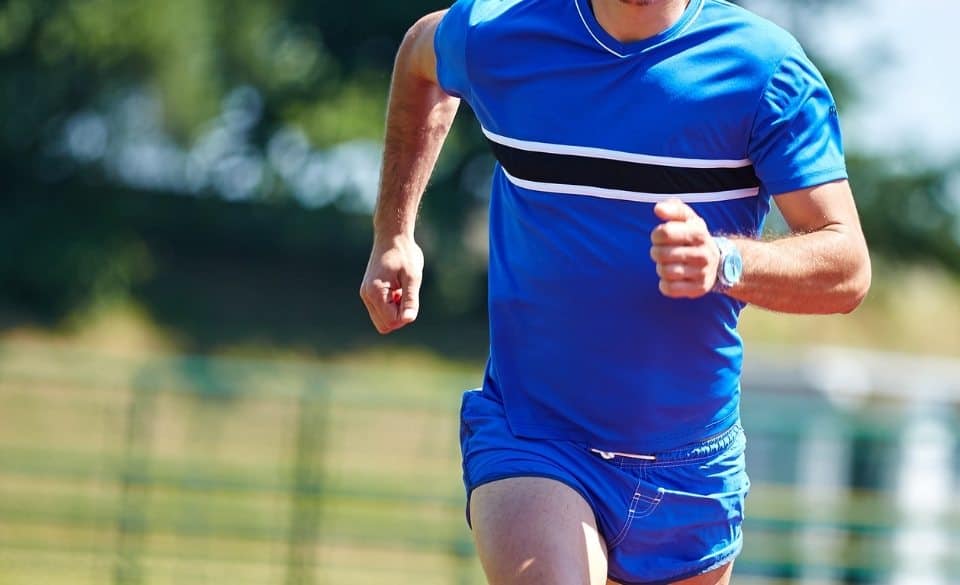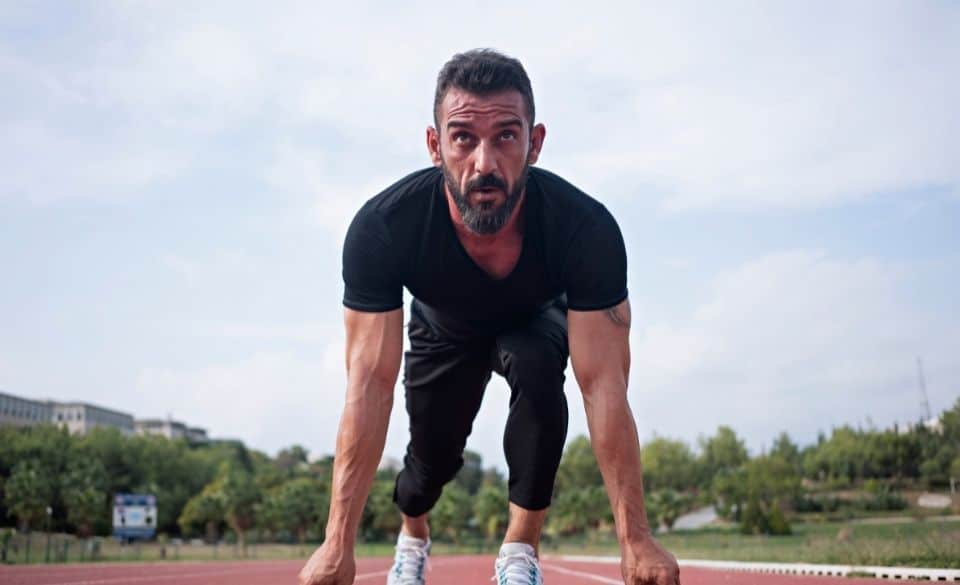
Sprint Training For Seniors & Older Athletes – UPDATED 2021
Page Contents
Unfortunately, as we age our speed declines. That’s why sprint training for seniors and older athletes becomes more and more important.
You see as we age, one significant factor that affects our speed is muscle mass. Between the ages of 25 and 50, we see a decline of 10% and a further 45% as we get older.
So what do we do about this? And is there a way we can perform sprint training without the risk of getting injured? Keep on reading to learn the correct method of sprint training for seniors and older athletes.
Sprint Training For Seniors & Older Athletes – A Complete Guide
Maintaining speed after your 40s is not only useful for runners but also for other sports such as triathlon. That’s why sprint training for seniors should never be forgotten or put to the side.
Your top-end speed can not only help you win races but can also be the sole reason why you lost. It can also help sort accelerations during a 5k race or even that final finishing kick during a triathlon.
However, as you hit your 50s, 60s, and 70s, your speed rapidly declines and more time needs to be spent training to preserve it.
Luckily there are some ways to safely preserve and sometimes improve your speed as you get older. Some of these training methods include:
– Strength training
– Plyometrics
– Stride outs
– Weight Training
Getting stronger by following a strength training plan can not only help improve speed over short distances but also prevent your muscles and tendons from getting weaker from age. These workouts should include a mixture of weight training and resistance training.
For those that aren’t interested in hitting the gym or have time for weight training, including some simple stride outs into your training plan can help improve your speed.
You can implement two sessions per week of 5-10 x 100 m stride outs after your easy runs. This helps to improve not only your leg speed but also helps you to relax under speed.
Overall, the key to improving speed as you get older is to improve muscle quality and neuromuscular control. That means each week focusing on exercises that challenge:
– Balance
– Stability
– Reflex
– Leg Speed
Sprint training for seniors or older athletes is no different from what you would do when you were younger (although less volume). However, more focus should be spent on improving muscle mass and allowing adequate recovery time between strength or speed sessions. Remember as you get older your recovery time takes longer.

Sprinting After 40 – What You Should Know?
Training for sprinting after 40 can not only help improve your times over long distances but help you become more relaxed when you run. Just because you may be focused on distances above 3k doesn’t mean you should forget about faster-paced workouts such as sprinting.
Sprinting not only helps your explosive speed but helps you develop improved leg speed which is vital during interval sessions and the final 400m of a race.
The key to improving your sprinting after 40 is to improve muscle quality and neuromuscular control through sprint training, weight training, balance training, and plyometrics.
Depending on your goals and events you are training for, will depend on the type of sprint training you will need to implement. If you looking to improve your top-end speed for the end of a 3 or 5k, weight training, and stride outs will be enough to improve your finishing kick.
If you are looking to improve your 100m, 200m, or 400m times, it would require you to spend multiple days focusing on weight training, plyometrics, and short explosive intervals (25-50m).

Sprinting At 60 Years Old – Getting Started
Sprinting at 60 years old comes with some danger. Our bodies aren’t used to the impact and our muscle mass has declined substantially. That means any sprint training needs to be correctly implemented into a running plan so that tendons, muscles, and bones can adjust to the impact of sprinting.
For runners above 60 years old, it is important to include regular weight training in your running program. Doing so can help reduce the chance of injuries when sprinting and doing high-intensity training. It is also important to allow multiple days between each sprint interval workout for adequate recovery.
For many runners over 60 years their body can no longer handle high mileage, so implementing some sprint training into their training program can help improve their times and help them become more efficient runners.
Injury Free Running After 40
Staying injury-free is a goal of every runner as we constantly push the boundaries of mileage, intensity, and recovery. Although as we get older it becomes more and more difficult to stay on top of constant niggles caused by running.
So what are the best ways to stay injury-free when running after turning 40?
First and foremost, make sure you are following a well-constructed running training plan that provides adequate recovery through correct periodization. Then make sure you spend a few days each week focusing on mobility, self-massage, or foam rolling. Both can help reduce the load on the muscles and prevent overuse.
Regular ice baths and regular visit’s to a physiotherapist can also help keep you injury-free after 40.
Overall, the main things you should be focusing on as you get older are:
– Regular foam rolling
– Regular massage
– Adding 2-3 days of weight training each week
– Correct training and periodization
– Eating a healthy diet rich in carbohydrates and protein
If you are constantly experiencing injuries or DOMS, first see if you are implementing the above into your training. If you are, it is time to readjust your training to allow for more recovery



